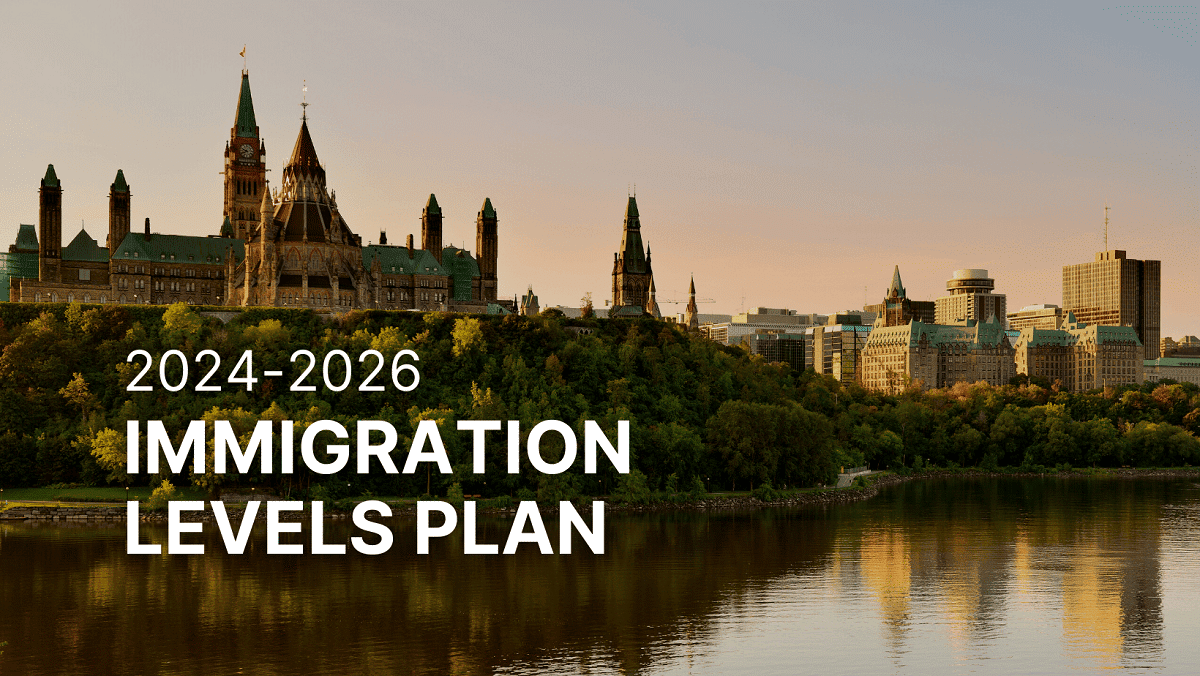
Canada’s 2025–2026 Immigration Strategy Sets a New Standard for Balanced, Sustainable Growth
Canada has unveiled a transformative immigration blueprint for 2025–2026, prioritizing sustainable population growth, labour market alignment, and humane refugee protection while addressing growing pressures on infrastructure, housing, and public services.
The Departmental Plan, released by Immigration, Refugees and Citizenship Canada (IRCC) on June 20, 2025, outlines reforms across three major areas of responsibility: temporary migration (visitors, students, workers), permanent residency and integration, and citizenship and passport services.
The plan aims to ensure that Canada remains a global leader in immigration while safeguarding the well-being of newcomers and Canadians alike.
A Policy Shift Towards Sustainability
The new plan arrives amid rapid demographic growth—Canada’s population now exceeds 41.5 million. But that growth has brought challenges, notably rising rents, home shortages, overwhelmed transit systems, and long healthcare wait times.
IRCC’s strategy is to recalibrate immigration numbers without compromising its global leadership in skilled immigration and humanitarian protection.
Key changes include:
- Capping temporary resident numbers to relieve pressure on housing
- Shifting focus in permanent immigration to already-present workers and students
- Prioritizing economic immigration through category-based Express Entry
- Modernizing service delivery for citizenship and passport applicants
- Enhancing refugee protections and international partnerships
Temporary Residents: From Volume to Viability
Controlled Growth in International Student and Work Permit Programs
IRCC plans to manage intake more carefully, particularly for international students and temporary foreign workers, who have doubled in numbers since 2017.
Annual Temporary Resident Targets:
- 2025: 673,650
- 2026: 516,600
- 2027: 543,600
These figures exclude tourists and short-term visitors, focusing on long-stay residents who require more resources and infrastructure support.
Breakdown by Program:
| Stream | Annual Target (2025–2027) |
|---|---|
| International Students | 305,900 |
| Temporary Foreign Worker (TFW) | 82,000 |
| International Mobility Program (IMP) | 285,750 (2025), 128,700 (2026), 155,700 (2027) |
These reductions will bring Canada closer to its goal of reducing temporary resident population share to 5% by 2026.
Visitor Program Improvements
IRCC is streamlining access for genuine visitors while maintaining strong border and document integrity:
- Expanded eTA Eligibility: Nationals from 67 countries can now apply online for visa-free access.
- Enhanced Fraud Detection: Visa refusal rates rose 61% for high-risk cases thanks to new officer training.
- Regulated Consultants: New rules for immigration consultants ensure fair representation and reduce applicant exploitation.
In parallel, IRCC continues to fast-track visa processing for people fleeing crises in Gaza, Sudan, and other conflict zones.
International Students: Economic Contribution vs. Local Capacity
International students are vital to Canada’s innovation and job creation, contributing over $22 billion annually. But their rapid growth has outpaced available housing and healthcare services.
New Measures for 2025:
- Study Permit Cap: Institutions must now manage intake more cautiously.
- Increased Financial Requirements: In 2025, students must prove they can support themselves with $20,635 CAD plus tuition and travel. This will rise annually.
- Francophone Student Pilot: Launching to build French-speaking communities outside Quebec.
- PGWP Reforms: Graduates in high-demand fields like healthcare, construction, and STEM will be prioritized for Post-Graduation Work Permits.
- Spousal Work Permit Revisions: New rules aim to match labour demand while minimizing abuse.
Permanent Residency: Strategic and Community-Aligned
Canada will scale down permanent resident (PR) targets to reduce stress on cities and social systems.
Permanent Resident Admission Targets:
- 2025: 395,000
- 2026: 380,000
- 2027: 365,000
Focus areas include:
| Stream | Share of Total PRs (2025) |
|---|---|
| Economic (skilled workers, PNP) | 62% |
| Family Reunification | 22% |
| Refugees & Protected Persons | 15% |
| Humanitarian Programs | 1.2% |
Over 40% of PRs in 2025 will be current students or workers already in Canada—helping them integrate faster with fewer service demands.
Express Entry: Skills, Sectors, and French Speakers
The Express Entry system will increasingly prioritize sector-based categories and French language proficiency.
Priority Groups:
- Candidates with strong French language skills
- Those with work experience in healthcare, education, trades, and social services
- Applicants under Canadian Experience Class, particularly with in-Canada work or study history
This targeted approach reflects economic needs and regional demographic goals.
Refugees, Humanitarianism, and Francophone Growth
Canada will reaffirm its global humanitarian role with:
- 12,000 refugees annually from Africa, Asia-Pacific, and the Middle East
- 4,000 refugees from the Americas by 2028
- A permanent Economic Mobility Pathways Pilot for displaced persons with job offers
- 8.5% of all PRs in 2025 to be French-speaking, through special immigration streams
Some streams of the Private Sponsorship of Refugees (PSR) program will be paused to clear backlogs.
Citizenship and Passport Modernization
IRCC plans to raise the citizenship uptake rate to 85% by making the process easier and more inclusive.
Citizenship Upgrades:
- Online applications for families and minors
- Digital knowledge tests and language waivers for qualified applicants
- Inclusion of Indigenous Knowledge Keepers in ceremonies to reflect Truth and Reconciliation values
Passport Reforms:
- Online renewals expanded across Canada
- Automation to reduce wait times
- International access to passport services for Canadians abroad
These changes will help over 4.5 million Canadians annually access vital travel and identity services.
Global Impact: A Model for Migration Governance
Canada’s strategy aligns with the UN Global Compacts on Migration and Refugees, emphasizing:
- Social cohesion
- Gender equity
- Legal pathways for vulnerable populations
- Labour mobility agreements with ASEAN and CPTPP countries
Conclusion: A Realigned, Resilient Immigration System
Canada’s 2025–2026 Immigration Plan marks a shift from high-volume to value-based immigration. By focusing on sustainability, labour market needs, and integration capacity, IRCC aims to ensure a strong, inclusive Canada that continues to lead globally in migration policy.
As Minister Diab put it:
“Our goal is to reduce the share of temporary residents and transition more to permanent residence while respecting the limits of our infrastructure and services.”
This balanced, transparent approach sets a precedent for countries worldwide.
For a consultation about Immigration options, reach out to the CAD IMMIGRATION today!





